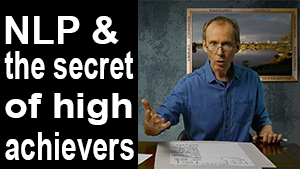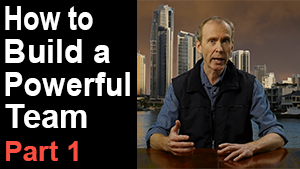
Notes from some of Osho's discourses... Phone 07 5562 5718 or send an email to book a free 20 minute telephone or skype consultation. NLP Hypnotherapy and Meditation with an Osho Zen Sannyasin. Gold Coast, Robina, Australia.
Osho: The Hidden Splendour
 |
Discourses by Osho are available in book and MP3 form. The following notes were taken from the series of discourses: THE
HIDDEN SPLENDOUR |
#1: "Nothing has to be renounced, everything has to be experienced as deeply and totally as possible." On Oregon commune and political strategy.
#3:
Excellent: The watcher is simply a mirror - it just reflects. It has no language,
no concepts - it is just pure awareness - it is just seeing. Only the mind speaks
within you. The heart and the being do not speak. "I" statements indicate
the ego. Avoid using the pronoun 'I' in your internal dialogue. "Unless your
knowledge becomes your experience it is simply a burden." Take courage to
leave the crowd behind and go it alone.
#4: Intimacy. Zen koan. Stop condemning yourself and accept yourself in your totality.
#8:
Excellent: (Towards the end of this discourse). What is religion? Three layers
of consciousness: thought/mind, feeling and being. There is an outside and an
inner. Mind is mainly about the outside. A description of going inside. On witnessing,
mind, meditation. Don't be a missionary and spread the word about Osho just spread
your joy and your laughter. Excellent section: Keep on meditating until you find
a feeling of immortality and eternity.
#10: Excellent section: "Who am
I?" Body, mind, nothingness. You are neither, you are not the experience,
you are the one who is experiencing it. Eventually there is no experience left,
not silence, blissfulness, nothing… there is nothing as an object for your
subjectivity. This is you. Any object there is a barrier. Anything that you can
perceive or experience is an object. Even nothingness and silence are objects.
When there is no object, unobstructed by an object / experience, the consciousness
moves back onto itself - it becomes self realisation.
#11:
Excellent sections on awareness: "I am going to commit every kind of
sin - dance, drink, love - because I trust that God is compassionate. He will
forgive. My sins are very small and His forgiveness is immense" Osho quoting
Omar Kyam the great Sufi poet.
#12: About the AIDS scare and nuclear proliferation of the 1980's. On miracles.
#13:
Excellent: Osho answers the question: "What has Osho learned from his
Sannyasins?" On spontaneity and commitment. Anecdote on a young nun who escaped
from a Jaina monastery with her boyfriend. An arrest warrant was issued for her
arrest and her parents went on a fast until death outside of the monastery to
coerce her to return. She threatened to expose the corruption and hypocrisy within
the monastery. "The questions that cannot be solved by doing can only be
solved by non-doing. Only in a moment of non-doing are you receptive and then
existence pours all of it treasures into you."
#14: The need to be recognised is a sickness of the soul. The whole of existence
already recognises you. What is the need for more recognition? Osho's effort is
that the ego should not exist hence no need for recognition.
#15:
Excellent. On being false and being authentic. Drop your falseness and what
you have left is truth. Follow your heart.
#16:
Excellent: The difference between flowering, awakening, self realisation and
enlightenment. Flowering is the first stage. (Perhaps it is the attainment of
the fourth subtle body?) Awakening follows on from flowering but one can still
fall back. Self realisation - one has realised the self. Osho says it is analogous
to being the dew drop. One can still fall back from self realisation because the
ego can reform. Enlightenment is the ultimate and there is no return. Osho says
it is analogous to the ocean falling into the dewdrop.
#20:
Excellent: Osho comments on the use of the red mark on the brow chakra. "The
red ray is the most powerful colour in awakening the that which is unconscious.
The red colour can open the third eye. But a red mark on the brow chakra reflects
away the red colour." Married women wear the red mark until they are widowed.
Osho thinks that the purpose is to block their evolution of consciousness until
they are widowed when they then want the energy to move away from the sex centre.
(I don't quite understand it because I thought that some men also wore the red
mark.)
Osho explains the reasoning behind touching the feet of an enlightened
Master. Energy can't move from a round part of the body. The most energy can move
from the tips of the fingers and the toes. So the disciple touches the feet of
the Master and the Master touches the third eye and an energy circuit of bioelectricity
is created. When you close your eyes the energy goes to the third eye.
The
last thought and feeling at night is the first thought and feeling in the morning.
If you go to sleep meditating then you can experience 8 hours of meditation in
sleep. The practice of praying just before bed is for the same reason.
Share With Friends
Subscribe to Newsletter
| DISCUSSION GROUPS | |
|---|---|
 |
|
| NLP Future Selfing | |
| NLP, Hypnotherapy & Meditation | |
| NLP Peace Mapping | |
| Facebook Discussion Group | |
| The secret of high achievers |
|---|
 |
| How to build a powerful team |
 |
| Learn the NLP Meta Model |
 |
| How to use a hypnosis pendulum. |
 |
